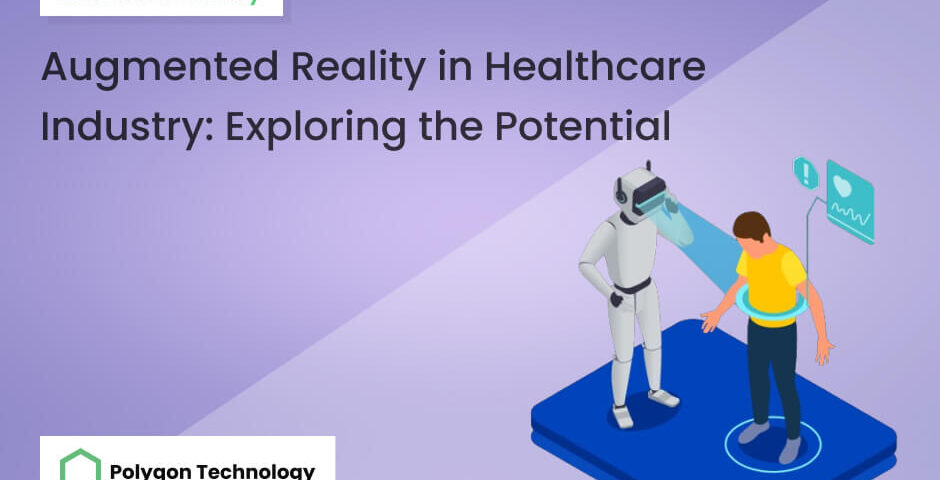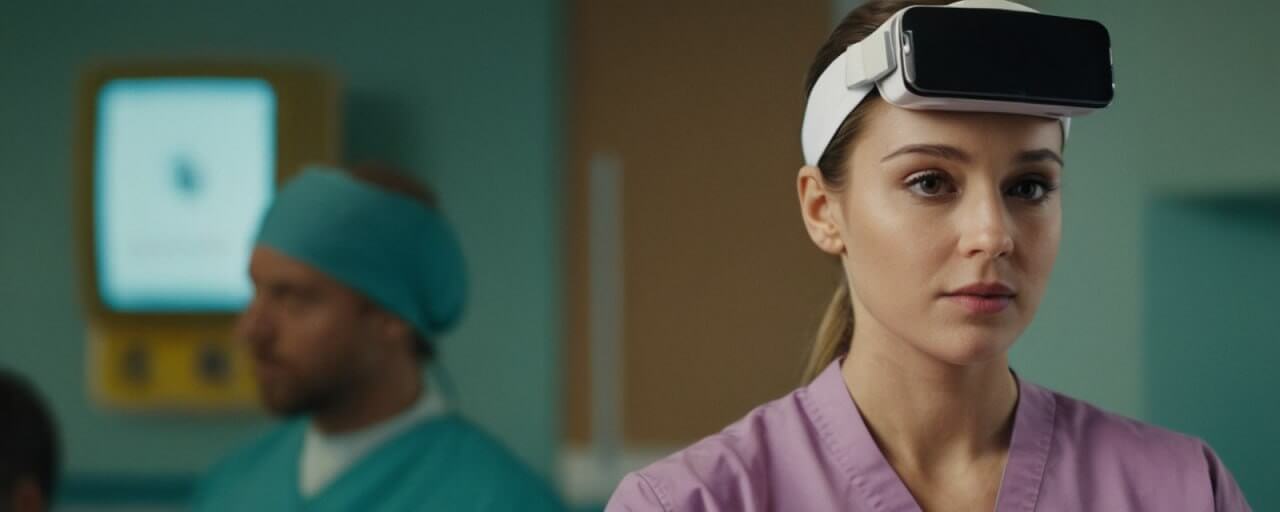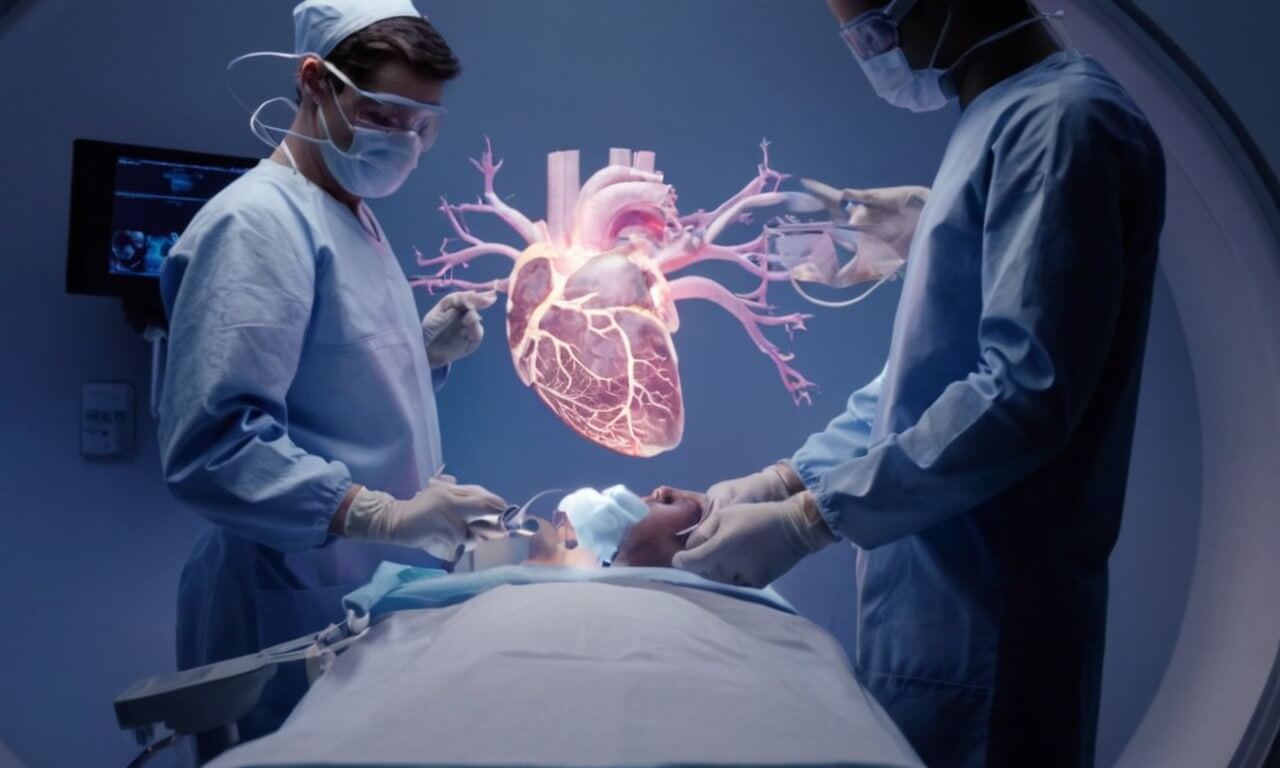
Augmented Reality in Healthcare Industry: Exploring the Potential
Augmented Reality in Healthcare Industry: Exploring the Potential

Md. Rabiul Alam Sarker
Rabiul Alam brings a blend of manual and automation expertise to the world of software testing. With a deep understanding of the entire testing life-cycle for dynamic web and mobile applications. His experience spans popular testing frameworks like Selenium, TestNG, and Appium. Additionally, he possesses hands-on knowledge of DevOps tools like Docker, ELK stack, and CI/CD pipelines.

Md. Asad Chowdhury Dipu

We are all familiar with augmented reality by now. Just as AI and data analytics optimize day-to-day healthcare operations, AR offers promising opportunities for all stakeholders in the healthcare ecosystem. And this applies to a healthcare professional, provider, payer, or person involved in medical devices.
Now, healthcare providers use various AR-enabled devices, like head-mounted displays and wearables. This is how they effortlessly integrate virtual objects into the physical world. These practices enhance the quality of care delivery and patient experiences.
Embracing AR presents a pathway to enhance performance, operations, user experience, and ultimately, profitability. It is reshaping how medical professionals interact with patient data and conduct procedures.
On that note, we will explore the potential of augmented reality in the healthcare industry. You will learn why you should process your existing business with AR technology.
Can it become an effective healthcare solution with any profit potential? Let’s find out…
What is Augmented Reality (AR)?
How is Augmented Reality Making an Impact on the Medical Sector?
The healthcare industry is becoming modern because of Augmented Reality (AR). It seamlessly merges digital enhancements with our real-world environment. AR integrates computer-generated information with real-time experiences.
AR in healthcare is not just about flashy graphics. It is about improving patient outcomes and medical professionals’ efficiency. For instance, a surgeon can overlay vital information directly onto a patient’s body during a procedure. Also, a medical student can practice surgical techniques on virtual patients. These are just a couple of examples showcasing the immense potential of AR in the medical field.
One significant advantage of AR is its ability to integrate real and virtual worlds seamlessly. Therefore, medical professionals can visualize complex medical data in a more intuitive and accessible manner. For instance, AR can provide surgeons with 3D visualizations of a patient’s anatomy during surgeries. As a result, they can make more precise and informed decisions.
Moreover, AR facilitates real-time interaction with virtual objects. Hence, medical professionals can manipulate and analyze data on the fly. This capability is invaluable in medical education, where students can engage with virtual models of organs or medical equipment.
Another critical aspect of AR is its registration in 3D. It ensures the accurate placement of virtual objects in the real world. This precision is essential in medical imaging, where AR can overlay diagnostic information onto medical scans. It aids radiologists in diagnosis and treatment planning.

A report from Statista predicts that the worldwide AR market will reach $152 billion by 2030. It will have a growth rate of 36%. Similarly, the AR healthcare market is projected to grow at a rate of 26% from 2022 to 2027.
Augmented Reality in Healthcare Industry: The Common Applications We See Today
Augmented Reality (AR) has become a transformative technology in the healthcare industry. It is offering innovative solutions for medical professionals and enhancing patient care. Let’s explore some of the common applications of AR in healthcare.
Immersive Medical Training
AR is powered by virtualized training. This is how it offers a dynamic learning experience for medical students and practitioners. With AR, users gain deeper insights into body functions. So, they can tackle complex medical cases efficiently.
Tools like FlexAR provide tangible, interactive anatomy learning experiences. It doesn’t need any traditional study materials or cadaver dissections. Institutions like Case Western Reserve University utilize AR devices like Microsoft HoloLens to study human anatomy. It facilitates collaborative learning experiences for students.
Physician Training on New Therapies
Life sciences companies can educate healthcare providers on the latest therapies and drugs with AR technology. AR depicts disease progression and treatment procedures effectively through compelling illustrations and virtual demonstrations. This fosters collaboration between pharmaceutical communities and doctors. Ultimately, it accelerates the drug discovery and development processes.
Innovative systems like VisMol by Sygnature Discovery use AR to create immersive drug discovery environments. It enhances collaboration and expedites research efforts.
Virtual Surgical Planning
AR enables surgeons to create 3D digital models of surgeries. These surgeries are completed with digitized instructions and step-by-step procedures. Surgeons use AR to create digital models of complex surgeries. So, they get more detail in each step, which is a critical deviation to plan meticulously.
What’s more, AR enables surgeons to optimize surgical sequences through virtual analysis. So, they are more prepared to manage contingencies. They can analyze surgeries in-depth, anticipate contingencies, and review processes beforehand. All these lead to more precise surgical outcomes.
Augmedics’ xvision Spine System in Chicago exemplifies this. This allows surgeons to “see” patients’ anatomy through the skin. As a result, they can conduct accurate diagnosis and instrument navigation during procedures.

Accurate Symptom Detection
Communicating symptoms accurately to healthcare providers can be challenging for patients. This can lead to misdiagnosis and improper treatment. AR-enabled apps like EyeDecide utilize camera displays to –
- Simulate eye inspections
- Annotate symptoms
- Provide medical image analysis
This facilitates better communication between patients and healthcare professionals. It results in an accurate diagnosis and treatment.

Patient Self-Care
AR has become a key factor in promoting remote physiotherapy and rehabilitation. There are AR-powered applications that let patients take charge of their health. Through digital demonstrations of bodily motions, patients can receive expert guidance from doctors and physiotherapists, even in remote locations.
For example, apps like Know My Heart enable patients to monitor their pulse rate. Plus, they can detect potential heart conditions. Hence, they get timely intervention and medication.
Vein Visualization
Accurate vein visualization is crucial for procedures like blood collection and injections. Nowadays, there are AR handheld scanners equipped with near-infrared imaging. They enhance vein detection.
These scanners improve the success rate of first attempts. So, they reduce discomfort for patients. In this case, AccuVein’s vein finder is getting very popular. It uses AR technology to project digital laser images. Technically, it aids medical staff in locating veins quickly and efficiently.
Medical Imaging
Now, we can see AR displays in operating rooms. These displays use advanced algorithms to convert CT scans into detailed 3D maps of anatomical structures. Surgeons can visualize patient-specific anatomy intra-operatively. So, they can do better surgical planning by enhancing accuracy.
For instance, there are platforms like Immersive Touch. It provides surgeons with 3D holographic “X-ray vision.” It facilitates precise instrument navigation and real-time visualization of underlying tissues.
The Most Impactful Trends of Augmented Reality in Healthcare
Augmented Reality (AR) has brought some groundbreaking trends to the healthcare industry. With these trends, it is reshaping patient care and medical practices. Let’s explore some of the most impactful trends shaping the future of AR in healthcare.
Robot-Assisted Surgery
Now, AR is used in robotic-assisted surgery. Therefore, it is adding precision and efficiency to complex medical procedures. Real-time overlays of crucial information guide surgeons’ actions. This enhances decision-making and surgical outcomes. This trend heralds a new era of safer surgeries and improved patient outcomes.
Enhanced Physical Therapy
AR can provide interactive exercises and visual feedback to patients. This is how it is revolutionizing physical therapy and rehabilitation. AR-based applications facilitate correct movement execution.
Using these applications, patients can track their progress. They remain motivated throughout their recovery journey. This trend fosters higher patient engagement and contributes to more successful therapy outcomes.
Innovative Rehabilitation Techniques:
AR introduces innovative methods of intervention in motor and cognitive rehabilitation. Therefore, patients receive a safe environment to practice movements and exercises. So, their motivation also increases.
Moreover, AR enables caregivers to deliver cost-effective physiotherapy at home. It emphasizes personalized and convenient treatment options. Overall, AR in rehabilitation represents a paradigm shift in patient care.
Wound Care Management
AR solutions are transforming wound care management by offering innovative tools for assessment and treatment. This trend accelerates wound recovery and ensures optimal patient comfort during the healing journey. Now, healthcare professionals can do the following using AR applications –
- Visualize wounds in three dimensions
- Track healing progress
- Create tailored care plans
Real-Time Patient Records
AR technology provides seamless access to real-time patient records. AR-enabled devices are delivering vital information to surgeons. This advancement streamlines clinical workflows and empowers informed decision-making at the point of care. Also, it makes accurate patient data available. So, patient management is enhanced.
Seamless Hospital Navigation
AR is simplifying hospital navigation. In addition, it provides intuitive guidance for patients, visitors, and medical staff alike. AR wayfinding applications offer the following within hospital facilities –
- Step-by-step directions
- Interactive floor plans
- Points of interest
This trend reduces navigation-related stress and elevates the overall patient experience in healthcare settings.
Benefits of Augmented Reality in Healthcare
Augmented Reality (AR) technology has witnessed exponential growth in recent years. In particular, the healthcare industry is embracing its potential at a remarkable pace. According to Markets and Markets, the VR and AR market for healthcare is projected to grow at a staggering rate of 30.7% annually by 2025.
Let’s delve into some of the noble benefits that AR brings to healthcare.
Surgical Support
With the blessing of AR, it has become easier to create detailed 3D models of tumors or organs for surgical planning. This is how AR is benefiting science enterprises, hospitals, and healthcare sectors.
Surgeons can utilize these models through hands-free headsets. They overlay these models as holograms onto the surgical field. For precise execution, AR imposes incisions and procedures on the patient’s image. This provides real-time guidance during surgery.
Remote Guidance
In complex cases, doctors often require expert opinions and guidance to deliver optimal healthcare to patients. Using AR and audio headsets, specialists can make video call sessions. So, they can remotely view patients. Plus, they can guide local doctors in real time or during surgeries. This enables collaborative decision-making and enhances treatment outcomes.
Workforce Medical Training
AR offers immersive learning experiences for healthcare professionals and students. Remote mentors can provide guidelines and instructions for procedures. Also, they can diagnose patients from any location. This hands-on approach allows students to
- Learn from experts
- Gain practical experience with medical equipment
- Deliver top-quality care to patients
- Gain better medical training remotely
Diagnosis and 3D Imaging
AR facilitates accurate patient diagnoses and care. For that, it uses 3D annotations and remote visual assistance. Healthcare staff can gather patient details, reports, and statistics seamlessly.
With AR, full-body scans enable the visualization of symptoms. This leads to precise diagnoses without the need for extensive physical contact. This minimizes the use of Personal Protective Equipment (PPE). Ultimately, it reduces the risk of exposure to infectious diseases for both patients and hospital staff.
Telehealth and Proctoring
The telehealth industry has experienced rapid growth, especially in response to the pandemic. Patients from remote locations can schedule appointments with expert doctors and surgeons via virtual calls. And it is all thanks to AR remote assistance solutions.
This real-time interaction ensures timely diagnoses and consultations without the need for in-person visits. Patients can receive personalized care and expert advice from their homes. Technically, it mitigates the risk of disease transmission.
Challenges of AR in Healthcare
The VRARA Digital Health Committee wanted to address the present status of the VR/AR healthcare market. Also, they tried to pinpoint the challenges hindering its widespread adoption. On that note, they conducted a comprehensive industry survey.
From their survey, it is clear that augmented reality (AR) holds immense potential for revolutionizing healthcare. However, it also presents several challenges when integrating with traditional medical technology.
Here are some key hurdles to consider:
Cost of Monetary Funding
Startups in the VR/AR healthcare space face significant financial barriers. So, they are kind of frustrated with developing and marketing AR solutions. Despite the promising benefits of AR in healthcare, securing funding for product development and research remains a challenge.
However, with increasing awareness and interest in AR applications, both hospitals and third-party companies are showing a willingness to invest in AR technology.
Technical Issues
The healthcare industry is cautious about adopting AR solutions due to technical limitations. Not to mention the compatibility issues with existing devices. As AR technology continues to evolve, addressing these technical challenges will be crucial. Otherwise, its widespread adoption and integration into healthcare practices won’t be possible.
Clinical Organizational Issues
The healthcare sector sticks to a rigid bureaucratic structure and relies on paper-based records. This poses challenges to the adoption of AR technology. Mostly, the following issues slow down the implementation of AR solutions –
- Smart infrastructure availability
- Complex procurement procedures
- Resistance to change
Luckily, AR is compatible with various devices. This versatility offers the potential for accelerated adoption among medical staff.
Lack of Knowledge
There is a lack of awareness among healthcare professionals regarding the practical applications of AR. Perhaps, they think AR can’t go beyond gaming and entertainment. So, it is essential to educate stakeholders about the potential benefits of AR in healthcare. Doing so can drive adoption and increase efficiency in medical operations.
Regulatory Issues
Navigating regulatory requirements and compliance standards presents another obstacle to the adoption of AR solutions in healthcare. Enterprises must adhere to healthcare regulations, insurance policies, and data protection laws. These add complexity to the AR implementation process.
Data Privacy and Security
We should be careful about collecting and transmitting sensitive patient information via AR devices. This can pose the risk of data breaches and privacy violations. To minimize these risks, we must implement secure data management systems. Also, we should adhere to data protection regulations.
Key Takeaways on Augmented Reality in the Healthcare Industry
If you are a forward-thinking entrepreneur, you should have recognized the immense potential of augmented reality in healthcare by now. Integrating AR into your operations can lead to enhanced patient experiences, improved staff productivity, and streamlined healthcare processes.
In addition, you should carefully plan and integrate AR with existing technologies while ensuring data security. Only then, you can successfully adopt AR solutions. If necessary, invest in training and upskill your workforce. This will maximize the benefits of augmented reality in your healthcare organization.
As always, be ready to take advantage of the exciting opportunities that augmented reality brings to the healthcare industry.